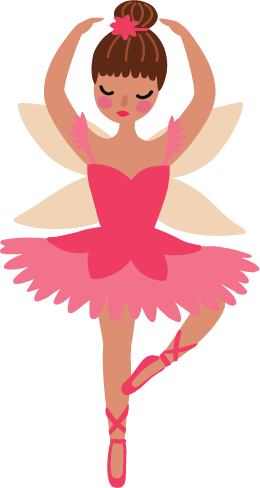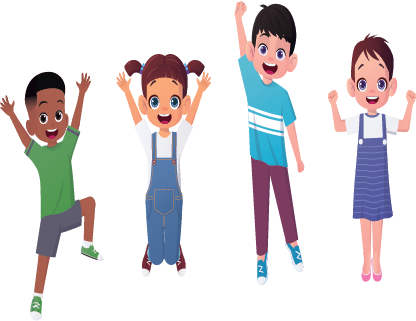Y4. Lesson 25. Present graphic notation
Prior learning: None
Duration: 30 minutes
Materials: Woodblocks or claves
Keywords: Beat, rhythm, singing, chanting, partners, rhymes, circle games.
Difficulty: ![]()
Prepare
Present
Graphic notation
Practise

Graphic notation offers numerous benefits in music education. It simplifies complex musical ideas into visual symbols, making music more accessible and engaging. This approach encourages creativity, allowing students to explore sounds without the constraints of traditional notation. It develops critical thinking as students interpret symbols and make decisions about sound production. Graphic notation also fosters communication skills through group performances and collaborative compositions. Visually connecting sounds and actions enhances memory and understanding of musical concepts and nurtures a more inclusive and imaginative approach to learning and creating music.
 Melodic development
Melodic development
![]() Students use classroom instruments to compose.
Students use classroom instruments to compose.
- Distribute tuned and untuned percussion. Ask students to divide into small groups.
- Project or print the worksheet.
- Teach that music can be represented not only by notes on the staff but also by shapes and lines. This method, as opposed to traditional notation, is called graphic notation.
- Show that loud notes can be represented by a big star and soft sounds by a small star. Long sounds are shown by a long line, and short sounds by a short line. High sounds are shown by high dots, and low sounds by low dots.
- [Note that these are examples only; students can use any symbols to represent sounds.]
- Using the first example of eight beats filled with symbols, ask the class to play the graphic notation using their percussion instruments.
- For example, students might have a loud strike on a drum for the first square, followed by two short notes on a glockenspiel. Then, three short sounds on a woodblock, etc.
- There are no hard and fast rules here. The concept is for students to enjoy interpreting and creating their music using graphic notation.
 Rhythmic development
Rhythmic development
![]() Students use graphic notation to create rhythms.
Students use graphic notation to create rhythms.
- Print and distribute the worksheet to students who find a partner. An example of a completed worksheet is shown.
- One student in the pair will compose a rhythm using graphic notation for the first four squares.
- The second student will use percussion instruments to interpret the score.
- When finished, the pair will swap roles.
- Encourage students to draw their rhythmic patterns using these symbols to develop their creativity and understanding of rhythmic variation.
- This activity may be spread over several learning periods.
 Creative movement
Creative movement
![]() Students use graphic notation to draw the story in graphic notation and act it out creatively.
Students use graphic notation to draw the story in graphic notation and act it out creatively.
Tell this short story to the class and tell students to write down the important activities in it.
In a lush rainforest, a monkey swings from tree to tree, birds flutter overhead, and raindrops fall. Suddenly, a thunderstorm arrives with loud crashes, and the animals hurry to find shelter. After the storm, the sun comes out, and the rainforest is filled with chirping birds and rustling leaves.
Repeat the story slowly so students can note the following:
- Rainforest
- Monkey
- Birds
- Raindrops
- Thunderstorm
- Animals hurrying
- Sun comes out
- Sounds of chirping birds and rustling leaves.
Graphic notation elements
These five elements can be represented graphically. Ask students to contribute their ideas for each action element on the board. Examples could be:
- Dots for raindrops
- Wavy lines for swinging monkey
- Zigzags for thunder
- Arrows for running animals
- Curved lines for chirping birds
When the storyboard is finished, students must act out the story. Examples of this may include:
- Monkey Swings (Wavy Lines): Students mimic swinging by extending arms and swaying side-to-side, like a monkey moving through trees.
- Raindrops (Dots): Students tap their laps or use their fingers to imitate gentle rain, gradually increasing speed to mimic a heavier downpour.
- Thunder (Zigzags): Students stomp feet or use drums for loud thunder sounds, crouching and pretending to hide when it strikes.
- Running Animals (Arrows): Students run in place or make quick, darting movements, pretending to find shelter.
- Birds Chirping (Curved Lines): Students flap arms like wings and mimic bird calls, celebrating the return of calm after the storm.
 Listening
Listening
![]() Students listen to The Sugar Plum Fairy, by Tchaikovsky.
Students listen to The Sugar Plum Fairy, by Tchaikovsky.

- Briefly discuss The Sugar Plum Fairy, a character from Tchaikovsky's Nutcracker, where she rules the Land of Sweets and performs a delicate dance.
- Tchaikovsky, a Russian composer, wrote the music for The Nutcracker in 1892, combining magical themes with clever use of instruments like the celesta to create the fairy’s light, ethereal sound.
- The music captures the enchanting, dream-like atmosphere of the ballet.
- Ask students to listen for specific elements, like identifying instruments (e.g., celesta), dynamics (soft to loud), or tempo changes.
- Encourage students to describe how the music makes them feel and what images come to mind.
- Have students suggest movements that match the music, reinforcing the connection between sound and physical expression.
- When finished, play the video from the next section.
 Visual learning
Visual learning
![]() Students discover graphic notation in a video of Tchaikovsky's Sugar Plum Fairy.
Students discover graphic notation in a video of Tchaikovsky's Sugar Plum Fairy.
- The beginning of "Dance of the Sugar Plum Fairy" from Tchaikovsky's The Nutcracker features a delicate, ethereal sound characterised by the use of the celesta, which creates a magical, bell-like tone. The music starts softly with a series of light, descending and ascending notes, creating a sense of mystery and wonder. The rhythm is gentle and staccato, adding to the fairy-like quality of the piece. This introduction sets a whimsical and enchanting atmosphere, perfectly capturing the essence of a magical, otherworldly dance.
- Ask students what they see and hear [music being shown in graphic notation form]
- Ask what the top line of graphics is showing [the melody]
- What about the lower graphics? [the accompaniment]
- At the beginning of the music, the strings are plating short notes - what technique is used here? [pizzicato]
- If a sound is long, how is it shown [as a long line]
- At 1:13, there are many short notes - how are these represented? [small diamonds]
- Ask if watching the graphic notation score makes understanding the music easier.
 Instruments
Instruments
![]() Students
Students
 Part work
Part work
![]() Students use body percussion to keep the beat while moving creatively to the music.
Students use body percussion to keep the beat while moving creatively to the music.

- Play The Sugar Plum Fairy.
- Students will move creatively to the music whilst keeping the beat on their bodies. Examples might be clicking or snapping fingers to the beat whilst exploring dance movements.
- Introduce light, flowing movements that mimic the music’s delicate quality, like tiptoeing or gentle arm waves.
- Encourage students to match their movements to the rhythm, using small jumps or spins on accented beats.
 Assess
Assess
Suggested lessons
Y1. Beat II

Y1. Beat III

Y1. Beat IV

